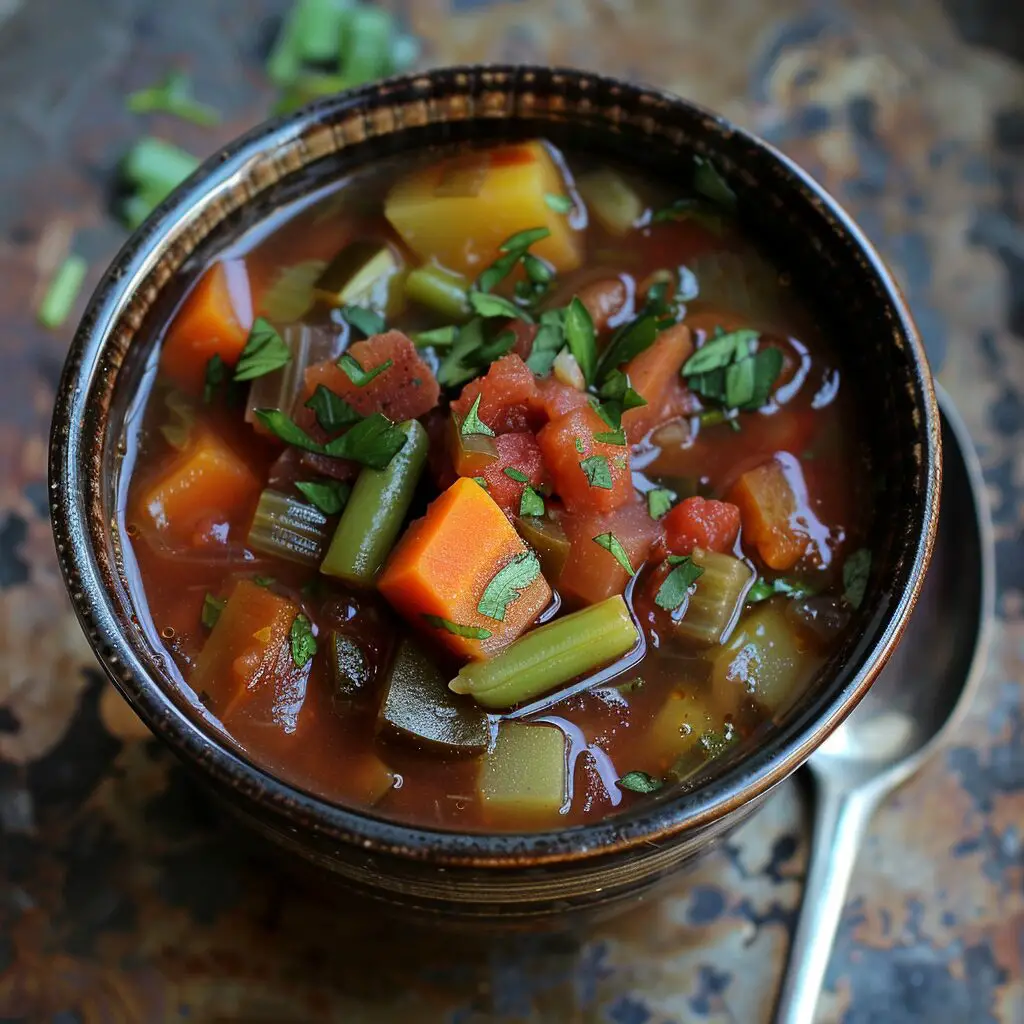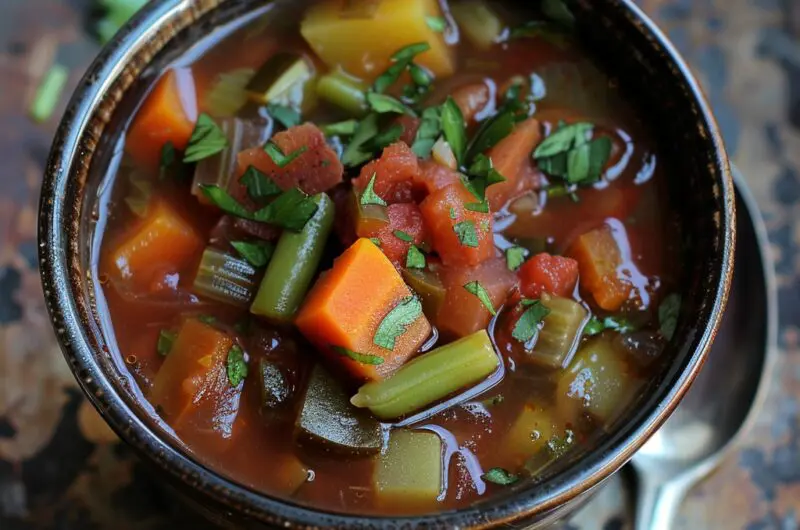In an age where fast food and instant meals dominate our dining tables, there exists a culinary relic so rich in history and flavor that it whispers tales of familial warmth and traditional cooking. This is the story of a lost soup recipe, one that only our grandmas remember, passed down through whispered kitchen secrets and faded handwritten notes. The essence of this soup lies not just in its ingredients but in the love and patience with which it was traditionally prepared.
Unraveling the Soup Mystique
The journey to rediscover these lost recipes takes us through the faded pages of family recipe books and the treasured memories of those who remember the old ways. These soups, whether a simple vegetable broth or a more complex concoction like minestrone or yakamein, tell stories of cultural fusion, adaptation, and survival. They are a testament to the ingenuity of home cooks who made do with what was available, transforming simple ingredients into nourishing meals.
One such recipe, often recalled with fondness, is a light tomato broth enriched with green beans, leafy greens, and herbs, embodying the essence of a garden in a bowl. This soup, likely a variation of the classic minestrone, showcases the power of vegetable broth, a cornerstone of many traditional recipes, simmered with onions, carrots, celery, and peppercorns for a flavor that’s both complex and comforting.
Tip: To capture the authentic taste of these soups, use fresh, seasonal ingredients and take your time to simmer the broth, allowing the flavors to meld beautifully.
Another hidden gem from the annals of culinary history is the New Orleans Old Sober, or Yakamein Soup, a fusion of Chinese and Creole cooking traditions. This beef noodle soup, believed to have healing properties, includes simmered beef, boiled eggs, and noodles, seasoned with soy sauce, hot sauce, and Worcestershire sauce. Its revival after Hurricane Katrina speaks to its enduring appeal and the resilience of traditional recipes.
The simplicity of Grandma’s Polish Vegetable Soup, with its hearty mix of cauliflower, dill, and mixed vegetables, serves as a reminder of the times when cooking was an act of love and recipes were guidelines rather than strict formulas. The emphasis on plant-based ingredients reflects a wisdom about health and nutrition that predates modern dietary trends.
The Essence of Cooking with Love
The secret to these lost recipes isn’t just in the ingredients but in the method of preparation. Slow cooking, a practice that has fallen out of favor in our fast-paced world, is key to unlocking the depth of flavor in these soups. It’s a method that requires patience, allowing each component to tenderly meld into a harmonious blend.
These soups, with their rich broths and hearty vegetables, were often served as the centerpiece of family meals, accompanied by stories and laughter. They weren’t just meals; they were experiences, shared and savored with loved ones. This communal aspect of meal preparation and enjoyment is something that many of us yearn to return to.
Tip: Revive the tradition of communal cooking by preparing these soups with family or friends, sharing stories and creating memories as you cook.
In an effort to keep these traditions alive, it’s important to document and share these recipes, ensuring they’re passed on to future generations. The act of cooking these soups can serve as a bridge to the past, connecting us with our ancestors and their culinary wisdom.
As we seek to rediscover these lost recipes, we’re reminded of the importance of preserving culinary heritage. These soups are more than just meals; they’re a connection to our past, a reminder of the simplicity and richness of home-cooked food, and a testament to the love and care that went into their preparation.
Reclaiming Our Culinary Roots
The quest to bring these forgotten recipes back to our tables is not just about nostalgia; it’s about reclaiming a piece of our cultural and familial identity. It’s a celebration of the diversity and richness of our culinary traditions, a homage to the generations of home cooks who crafted these dishes with care and creativity.
In today’s world, where convenience often trumps quality, taking the time to prepare a soup from scratch is an act of rebellion against the norm. It’s a declaration of the value we place on nutrition, flavor, and the act of cooking itself. By embracing these lost recipes, we honor the legacy of those who came before us and carry forward their traditions for future generations to cherish.
Tip: Don’t be afraid to experiment with these recipes, adapting them to suit your tastes and the ingredients you have on hand. The spirit of these traditional soups is in their adaptability and the joy of cooking.
As we gather around the table to enjoy a bowl of soup that has been lovingly prepared, we’re not just nourishing our bodies; we’re feeding our souls. These recipes offer a window into the past, allowing us to experience the warmth, love, and resilience of the generations that crafted them. Let us take a moment to appreciate the beauty and simplicity of these culinary treasures, ensuring their survival for years to come.
In conclusion, the journey to rediscover these lost soup recipes is more than a culinary adventure; it’s a voyage into the heart of our cultural and familial heritage. By bringing these dishes back to life, we not only pay tribute to the wisdom and creativity of our ancestors but also rediscover the joy of cooking with love, patience, and a sense of connection to the past. Let’s embrace these timeless recipes, making them a cherished part of our own kitchen repertoire.
Heirloom Vegetable Soup
Course: SoupCuisine: Comfort Food4
servings30
minutes40
minutes300
kcal70
minutesA warm embrace of nostalgia, this heirloom vegetable soup recipe captures the essence of grandmother’s kitchen, bringing together hearty vegetables and rich flavors in a bowl of comfort.
Ingredients
2 tablespoons olive oil
1 medium onion, chopped
2 carrots, peeled and diced
2 celery stalks, diced
4 cups vegetable broth
1 cup green beans, trimmed and cut into 1-inch pieces
1 cup chopped tomatoes
1 cup diced potatoes
½ cup chopped fresh parsley
Salt and pepper to taste
Directions
- Heat olive oil in a large pot over medium heat. Add the onion, carrots, and celery, and sauté until they begin to soften, about 5 minutes. This step builds the flavor base for your soup.
- Pour in the vegetable broth and bring to a boil. Add the green beans, tomatoes, and potatoes, then reduce the heat to a simmer. Cover and cook until the vegetables are tender, about 20 minutes. The slow simmering helps to meld the flavors together.
- Stir in the chopped parsley, and season with salt and pepper to taste. Let the soup simmer for an additional 5 minutes. The fresh parsley adds a burst of color and freshness to the soup.
Notes
- Feel free to add other vegetables like zucchini or spinach for a more varied nutrient profile.
- This soup can be stored in the refrigerator for up to 4 days or frozen for up to 3 months.
- For a heartier version, add cooked beans or lentils.
Frequently Asked Questions
Q: Can I use chicken broth instead of vegetable broth?
A: Absolutely! Chicken broth can be used for a richer flavor, making the soup even more comforting and hearty. Just ensure it aligns with your dietary preferences.
Q: How can I make this soup more filling?
A: Adding proteins such as beans, lentils, or even small pieces of chicken can turn this vegetable soup into a more substantial meal. Incorporating grains like barley or quinoa can also add texture and heartiness.
Q: Is this soup freezer-friendly?
A: Yes, this soup freezes beautifully. Cool it down completely, then transfer to freezer-safe containers or bags. It can be frozen for up to 3 months. Thaw overnight in the refrigerator before reheating.
Q: Can I add dairy to this soup, like cream or cheese?
A: For a creamier texture or a touch of richness, feel free to stir in some cream towards the end of cooking or sprinkle grated cheese when serving. Just keep in mind this will alter the nutritional content.


